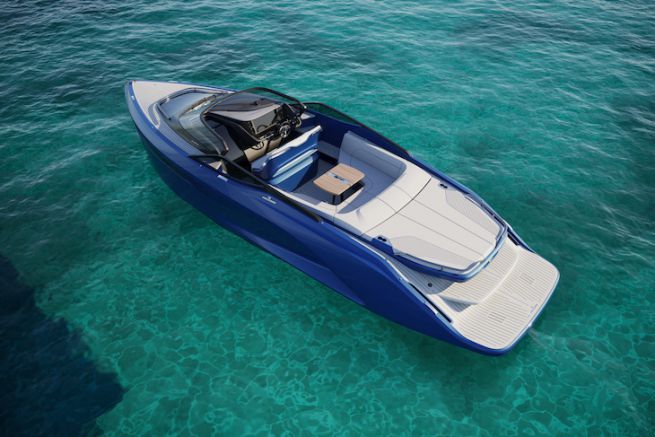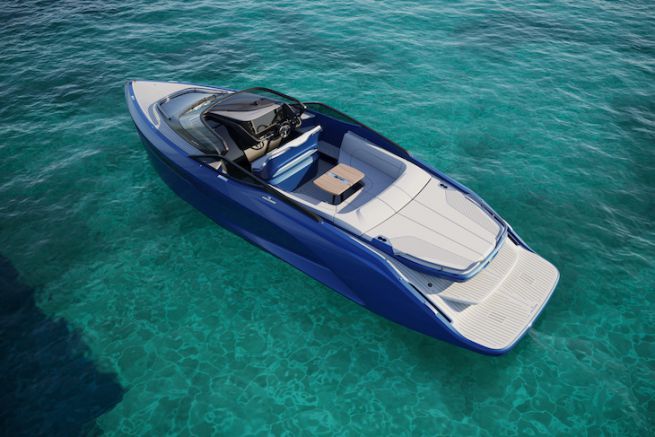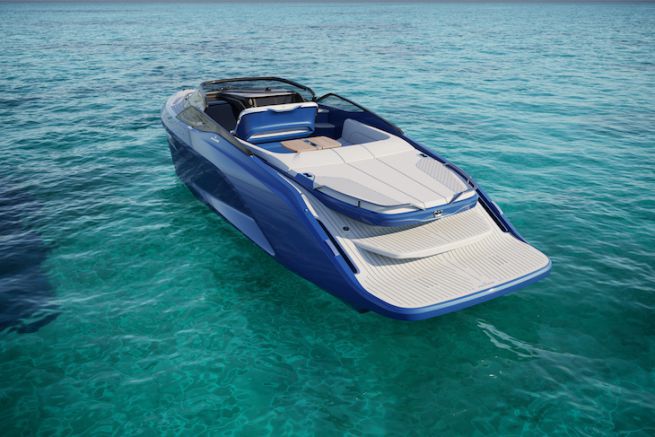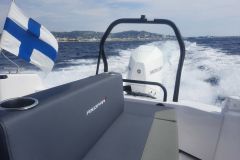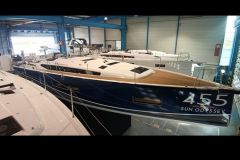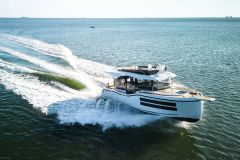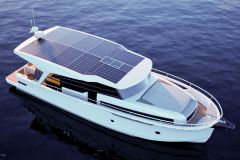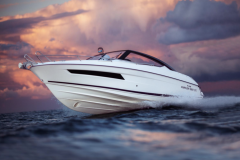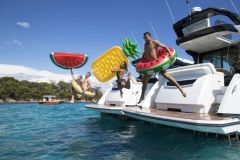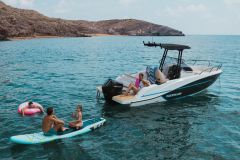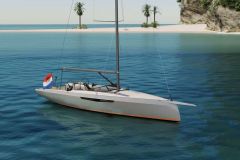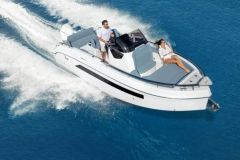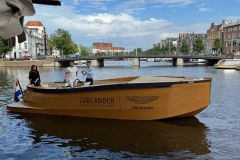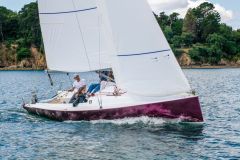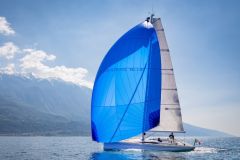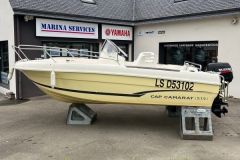Foils from the America's Cup
To design the new boat, Princess Yacht worked in collaboration with the British America's Cup challenge, Ben Ainslie Raing Technologies (BAR). Together, they have developed an Active Foil System (AFS) that should optimize stability and maneuverability "in all sea conditions, which will significantly reduce hull drag and redefine ride comfort."
BAR Technologies' challenge was to transfer its technological expertise to the powerboat world. The Princess Active Foil System (AFS) is composed of two carbon fiber foils under the water's surface that provide better dynamic stability, increased performance and efficiency. The R35 will not be a flying boat, but will use the lift of its dynamic foil system to adjust trim and heel while reducing drag by up to 30%. The foils will also allow for a fuel economy of nearly 30% at cruising speed (about 25 knots).
Foils for comfort
"We wanted to bring the prowess of America Cup foils to the luxury yacht market in an innovative way. But the brief was not "how can we include foils" euros but rather "how can we build a hull that is significantly more efficient, stable and faster?" explains Paul MacKenzie, Director of Product Development at Princess Yachts.
The port and starboard foils can be adjusted independently of each other by +/- 5 degrees, with the foil positioning automatically calculated by an on-board computer that takes into account acceleration phases and movements (roll, pitch) through the inertia measurement unit (IMU), taking into account speed, engine speed, steering system and user-selected modes. The pilot can choose between several algorithms: Optimal, Sport and Rough control to control the foils.
The optimal foil position is calculated 100 times per second with almost instantaneous repositioning of the foil to give the boat the desired comfort and stability.

A carbon shell inspired by racing cars
For the design, Princess Yacht collaborated with Pininfarina euros the car body designer well known for his legendary bright red Ferraris! Thus, the Princess R35 has a new carbon fiber hull structure with a clear objective of lightness. Always in reminder of the automotive world, we will find side air outlets, which should "maximize engine aeration as well as wake sprays"
In order to install the Princess Active Foil System (AFS), the British boatbuilder had to work on the hull, which had to be rigid, stable and light. An all-carbon fiber monohull structure was the only option to fully maximize the potential of the boat's design. This will be the first production boat of the brand to benefit from a carbon construction.
State-of-the-art construction technologies
"We decided to use carbon fiber to build the R35 because our boats are getting bigger and bigger and stability is very important. We wanted to introduce carbon fiber into the company more thoroughly and we thought the R35, which we want to be ultra-technological, was the perfect candidate to further develop our yacht building skills." says Paul MacKenzie, Director of Product Development at Princess Yachts.
Carbon fiber offers a weight saving of 15-20% over fiberglass, but this was not enough to make a real technological leap in the design of Princess. The design office therefore selected a manufacturing process based on a semi-solid resin film for infusion. This carbon manufacturing process allows a 25% weight reduction compared to fiberglass.
For a performance boat, weight is a key design consideration. So the team did not use a gel coat, saving another 300 kg on the final weight. The system used is a film that sits on the surface and is equivalent to a gel coat or paint.
To be able to produce in-house, Princess invested in a carbon fiber production facility at its Plymouth headquarters. " This investment makes Princess the first luxury yacht manufacturer to introduce carbon fiber boat construction on a mass production assembly line." explains the site.

50 knots at maximum speed: the fastest Princess!
Two Volvo V8 aluminum gasoline engines with 430 horsepower direct injection will propel the dayboat to nearly 50 knots, making it the fastest boat in the UK. "Rugged, safe, compact, and highly efficient, the motors provide an extra boost of performance and excitement." says the shipyard. The cruising speed of the boat is estimated at 25 knots.
"The engines are all-aluminum and feature direct injection, variable valve timing to optimize torque throughout the acceleration range, and CNC (computer-automated) machining with intake and exhaust ports that provide an exceptional level of torque and responsiveness and propel the R35 to 50 knots." develops the site.
"The 6.2-liter 430 model is the most powerful of the new generation of Volvo Penta gasoline engines, offers 14 percent faster acceleration and 10 percent better fuel efficiency than its predecessor. It incorporates technical features such as standard closed-loop freshwater cooling to protect internal parts from raw and salt water, or broadband oxygen sensors to optimize the engine in the presence of fluctuating fuel quality and to reduce carbon monoxide emissions by 95 percent." he adds.

 /
/ 